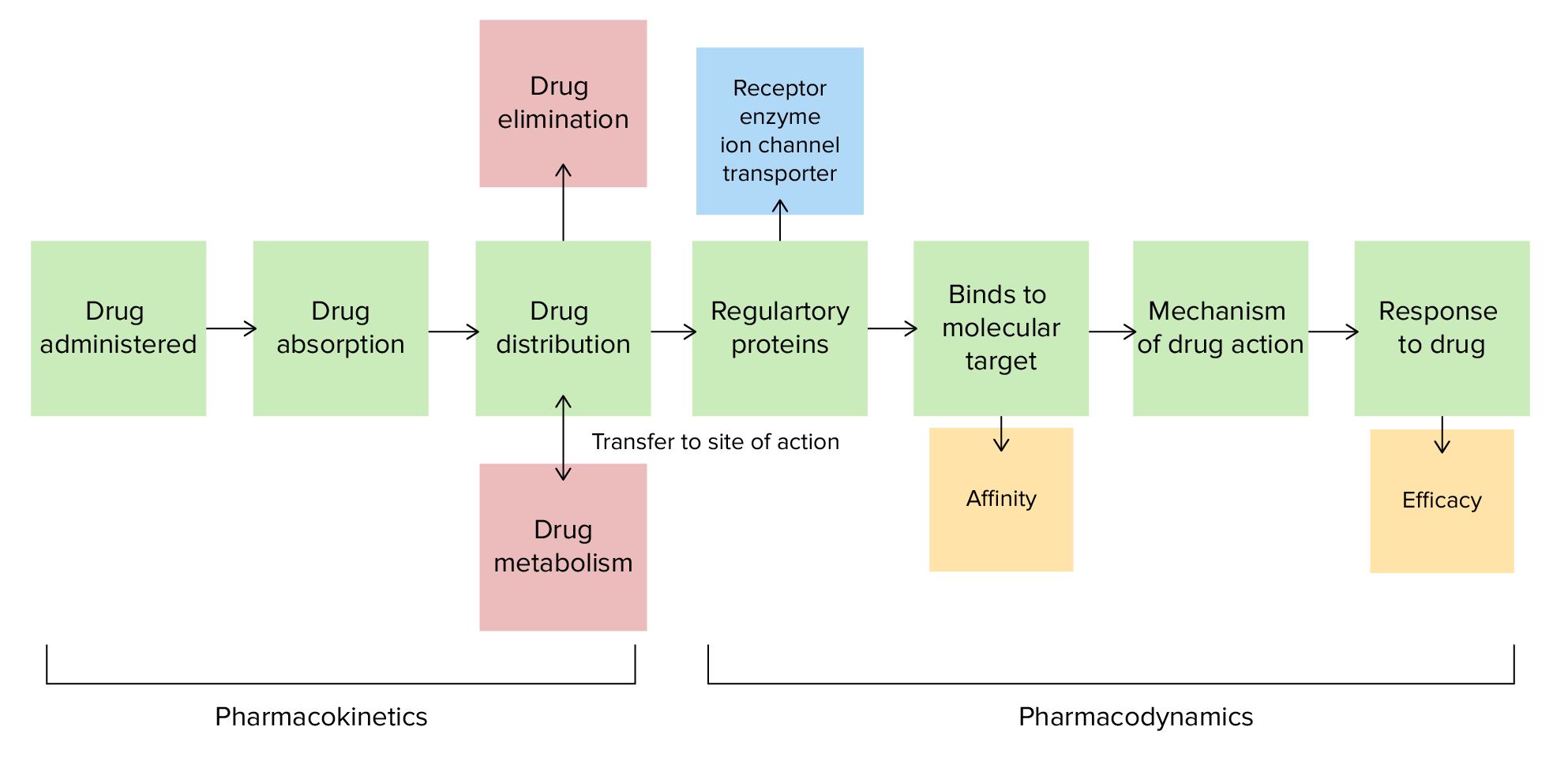Playlist
Show Playlist
Hide Playlist
Pharmacokinetics and Pharmacodynamics: Introduction
-
Slides 12 Chemistry Advanced Le Gresley.pdf
-
Download Lecture Overview
00:02 Okay. So, in the previous lectures, we looked at receptors and also enzymes. And now, what I would like to do is consider the journey that a drug makes; breaking down the different parts of the journey of a drug into the different phases: the pharmaceutical phase, the pharmacokinetic phase and also, the pharmacodynamic phase. In the pharmaceutical phase, a drug is disintegrated from its dosage form by dissolution of the active substrate. Pharmacokinetically, it is then either absorbed, then distributed, metabolised and excreted. The pharmacodynamic phase pertains directly to the efficacy of the drug receptor interaction, specifically in the target tissue. When we consider the purpose of the pharmaceutical phase, this is to optimise the pharmaceutical availability, making sure that there is drug available for absorption in the first place. Within the pharmacokinetic phase, optimisation of biological availability i.e. for example, a drug’s availability to be absorbed and also, to travel to the right tissue where it is supposed to function. 01:15 And finally, the pharmacodynamic phase, the objective, of course, to optimise the required biological effect which is the induction of therapeutic effect. In other words, time to reduce the amount of material we are actually need to achieve a desired effect without causing damage to surrounding tissues or interfering with other receptors. 01:40 The pharmacokinetic phase for the drug to be useful. The compound with the best binding affinity for a target is not necessarily the best drug. And indeed, it may actually show poor activity in vivo. There are many instances of this. For a drug to be useful, it must first reach the target site. It must be absorbed in sufficient quantity, distributed correctly into the target tissue and should not be metabolised too quickly or extensively, for example, via first-pass metabolism in the liver. We need to design drugs that can satisfy the above. And so, therefore, having something that works in vitro and actually interferes directly with an enzyme is of no use from a drug perspective unless it can actually reach the target within an organism. In terms of absorption, which is the first instance of pharmacokinetic journey, most drugs are given via the oral route. And why is that? If a drug is typically given via a non-intravenous route, not all of it may be absorbed into circulation. Poor oral absorption of the active drug can lead to poor bioavailability. 03:01 And this can be due to a number of factors: drug lipophilicity, solubility, ionisation, degradation, metabolism and physiology.
About the Lecture
The lecture Pharmacokinetics and Pharmacodynamics: Introduction by Adam Le Gresley, PhD is from the course Medical Chemistry.
Included Quiz Questions
Which of the following statements about pharmacodynamic phase is correct?
- Pharmacodynamic phase is related to the drug-receptor interaction and its biological effect.
- Pharmacodynamic phase is concerned with drug absorption.
- Pharmacodynamic phase studies the amount of drug that is excreted into breast milk.
- Optimization of the pharmacodynamic phase improves drug bioavailability.
- Pharmacodynamic phase is concerned with the amount of drug that is metabolized by the liver.
Which phase is most concerned with drug absorption and metabolism?
- Pharmacokinetic phase
- Pharmaceutical phase
- Pharmacodynamic phase
- Distribution phase
- Storage phase
Bioavailability is affected by which of the following factors?
- Drug's solubility
- Patient's gender
- Patient's weight
- Patient's age
- Drug's dose
Customer reviews
5,0 of 5 stars
| 5 Stars |
|
2 |
| 4 Stars |
|
0 |
| 3 Stars |
|
0 |
| 2 Stars |
|
0 |
| 1 Star |
|
0 |
2 customer reviews without text
2 user review without text




